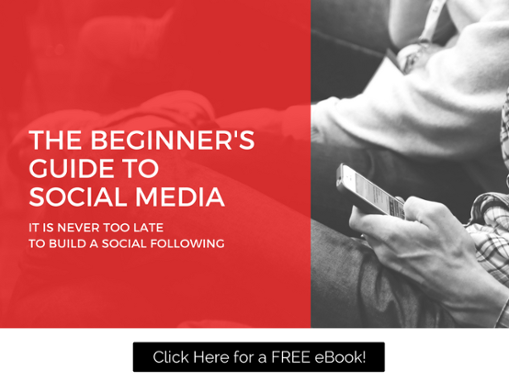This post was originally published in Forbes.
 Pivoting your marketing tactics is a way of life in the digital age. Market dynamics can change in a blink of an eye and marketers need to respond quickly by tweaking or completely pivoting their programs. Social media is particularly vulnerable to the whims of the market and public opinion, as a single negative social media post can affect your brand’s reputation in minutes.
Pivoting your marketing tactics is a way of life in the digital age. Market dynamics can change in a blink of an eye and marketers need to respond quickly by tweaking or completely pivoting their programs. Social media is particularly vulnerable to the whims of the market and public opinion, as a single negative social media post can affect your brand’s reputation in minutes.
Social media is an effective and proven channel to gain consumer insights and engage with your prospects and customers. Almost every marketing strategy now has some type of social media program. Some firms have implemented basic programs while others have embraced social media and are actively engaged daily with influencer microtargeting and social selling initiatives.
Whether you have a basic program or a robust program, you need to develop a strategy to mitigate the risks of reputational impact. Every firm needs to have a crisis management plan in place but, beyond that and before a crisis hits, marketing teams need to understand when to pivot their social programs to avoid risks and maximize effectiveness.
Each quarter we take a close look at our client’s social programs and benchmark them against goals and objectives. We take a look at what is working what is not working and evolve the program. While poor goal alignment or underperformance can trigger an overhaul of the program completely, other external factors may require a social media pivot.
We need to remember that social media channels run on technology platforms that are continuously evolving. As with any emerging technology, with widespread adoption comes an evolution in the way consumers use it and an evolution of the technology that supports it. Marketers need to be aware of ongoing changes and pivot their programs to get the results they require. Here are three triggers to look for when identifying a need for change in your social media program.
Social platforms change algorithms all the time, but the companies only make announcements of those changes when they are a significant departure from the current ways. It is extremely important for marketers to understand what even the small changes mean because social platforms are the ones that set the rules of engagement and your ability to reach your customers and prospects on their platforms.
For example, Twitter changed their algorithm last year so that the tweets you are most likely to care about appear at the top of your timeline -- still recent and in reverse-chronological order -- instead of an all-encompassing chronological feed. Facebook recently announced that users' news feeds would be populated by posts made by friends and family rather than by businesses and brands. The announcement stated, “Because space in news feed is limited, showing more posts from friends and family and updates that spark conversation means we’ll show less public content, including videos and other posts from publishers or businesses.”
Both of these announcements are giving priority to engagement. The key takeaways for marketers are that organic reach is going to be limited, and engagement and pay-to-play (advertising) will rule. Pivot your program to embrace employee and customer advocacy to encourage engagement and consider increasing your advertising spend.
Aligning Influencers
Outside of marketing teams, there seems to be a misconception about influencer marketing. People throw the term around claiming that people trust influencers and not ads, even though influencer marketing is the digital form of a celebrity spokesperson. It doesn’t have to be a real-life Hollywood celebrity, but it could be an expert in a specific field or market who serves as the "influencer."
Influencer marketing is pay-for-play -- a new form of advertising. No, influencers won’t endorse or promote your products from the goodness of their hearts. Some influencers may take product as compensation, but most established influencers expect cash or a long-term consulting engagement. At a recent conference, a social media representative from a chocolate company was discussing how they tried paying influencers in chocolate until one influencer just told them that chocolate doesn’t pay the mortgage. Influencers are free agents -- they are always looking for a better deal and they want long-term commitments.
When you sign up an influencer, you need to be aware that, along with their following and engagement statistics comes a real, live human being. They have opinions and they make mistakes. When you hire them, they become a spokesperson for your company. This means that you need to ensure that your brand values align with the influencer’s public persona.
Make sure you continually check out the type of content they create and share, especially during the course of your campaign. If it doesn’t align, then pivot your campaign and find influencers who better align with your brand.
Business Objectives Change
This may sound like a no-brainer, but you would be surprised at how many organizations change their business strategy and forget to pivot their social strategy to meet the new goals and objectives. In many cases, the social program has been running on a “set it and forget it” mentality and it is considered almost an afterthought.
Don't treat your social media efforts as afterthoughts. If business objectives or directions are altered in any way, revisit what your social media marketing strategies are and adjust them accordingly.
Even with the evolution of platforms and various changes to how consumers use these platforms, social media is your most nimble and least expensive channel to reach and engage with customers and prospects. It is relatively easy to pivot your program when needed, and doing so effectively requires recognizing the triggers to avoid risk and maximize effectiveness.




